DEBRIS

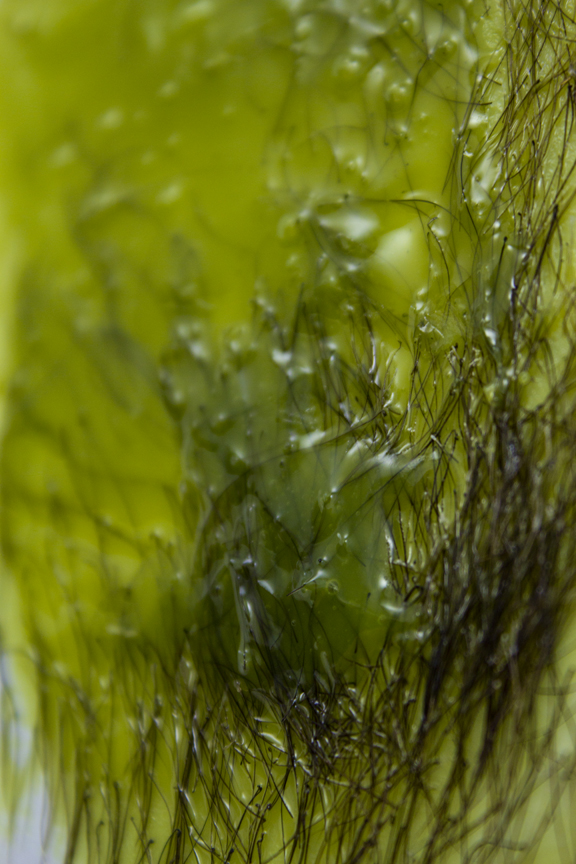

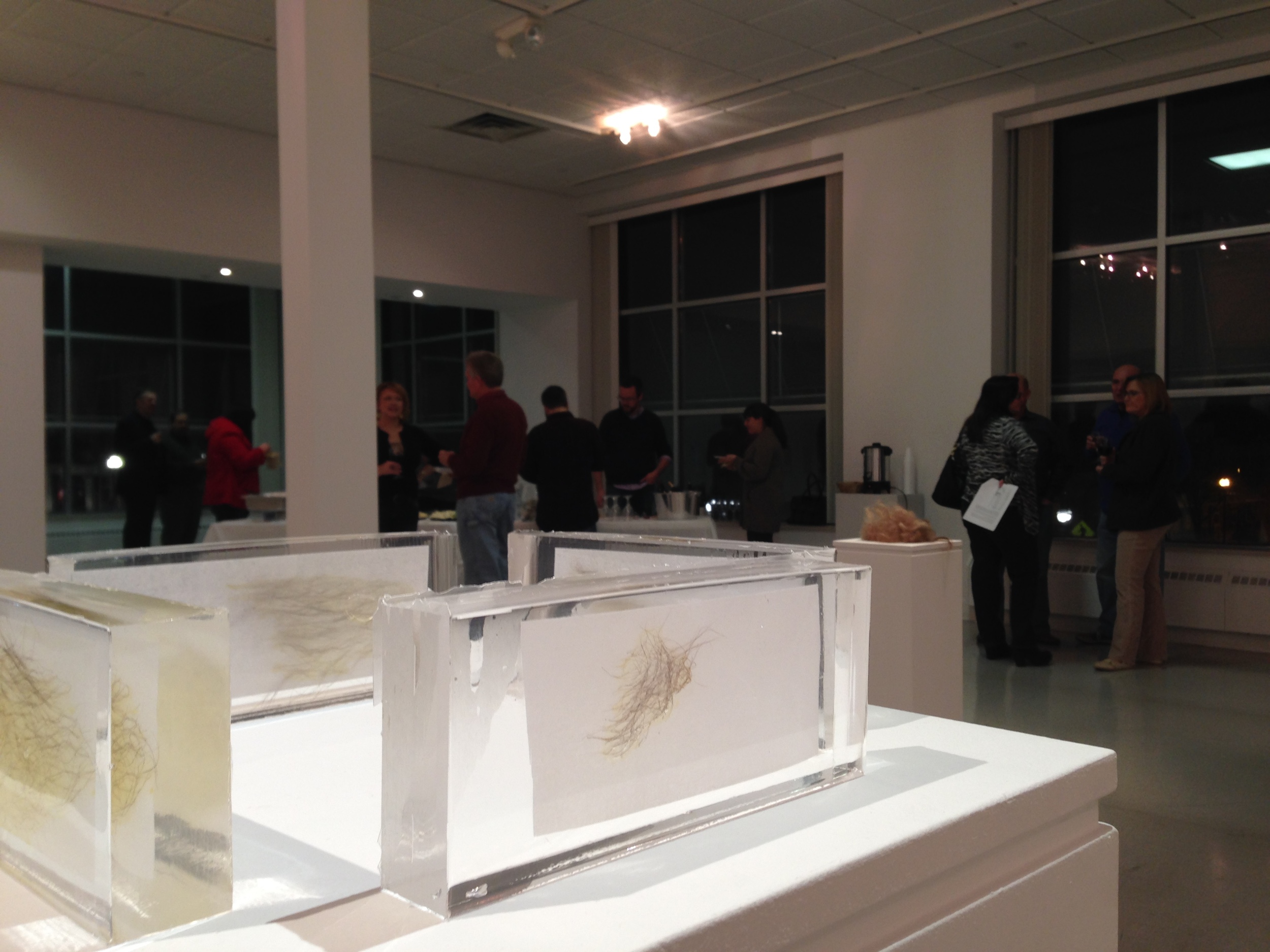
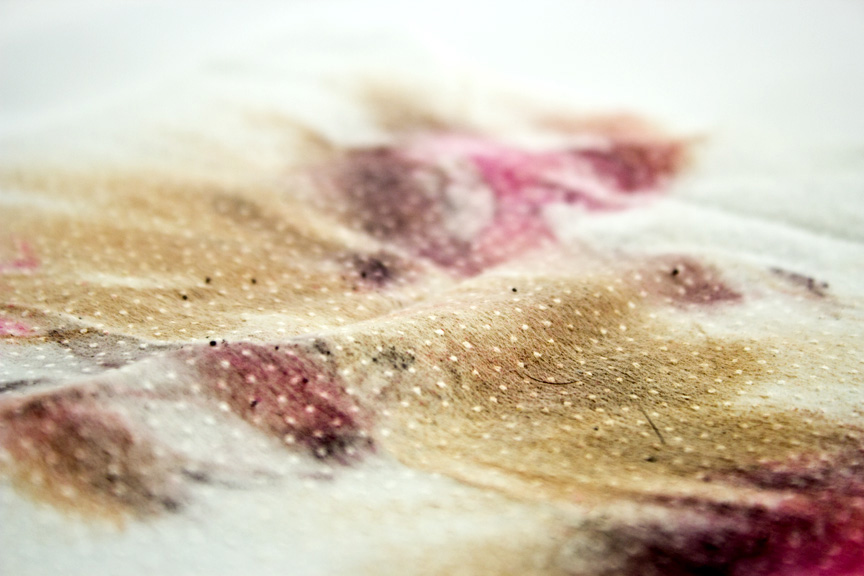
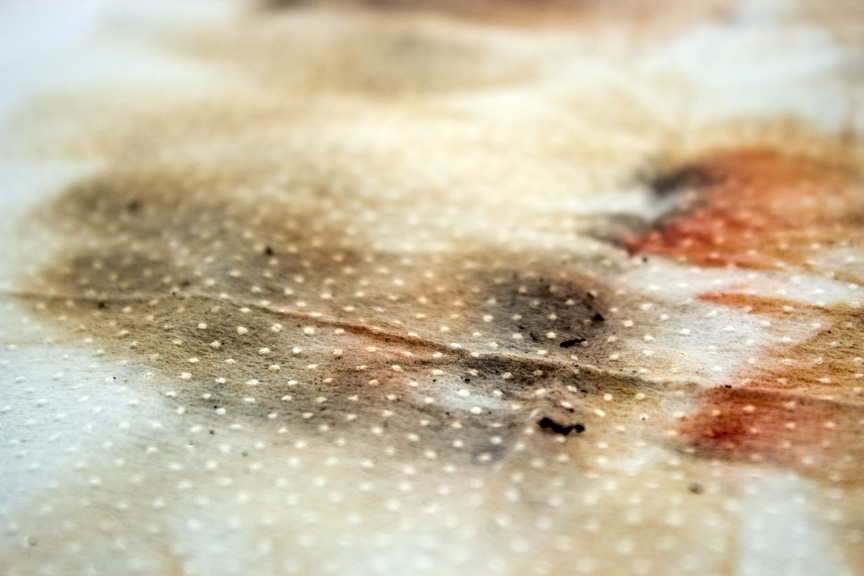
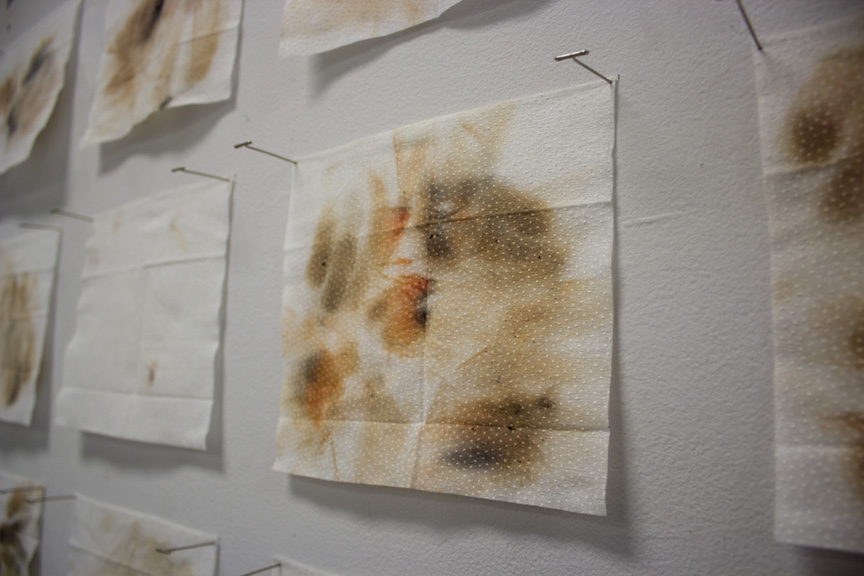
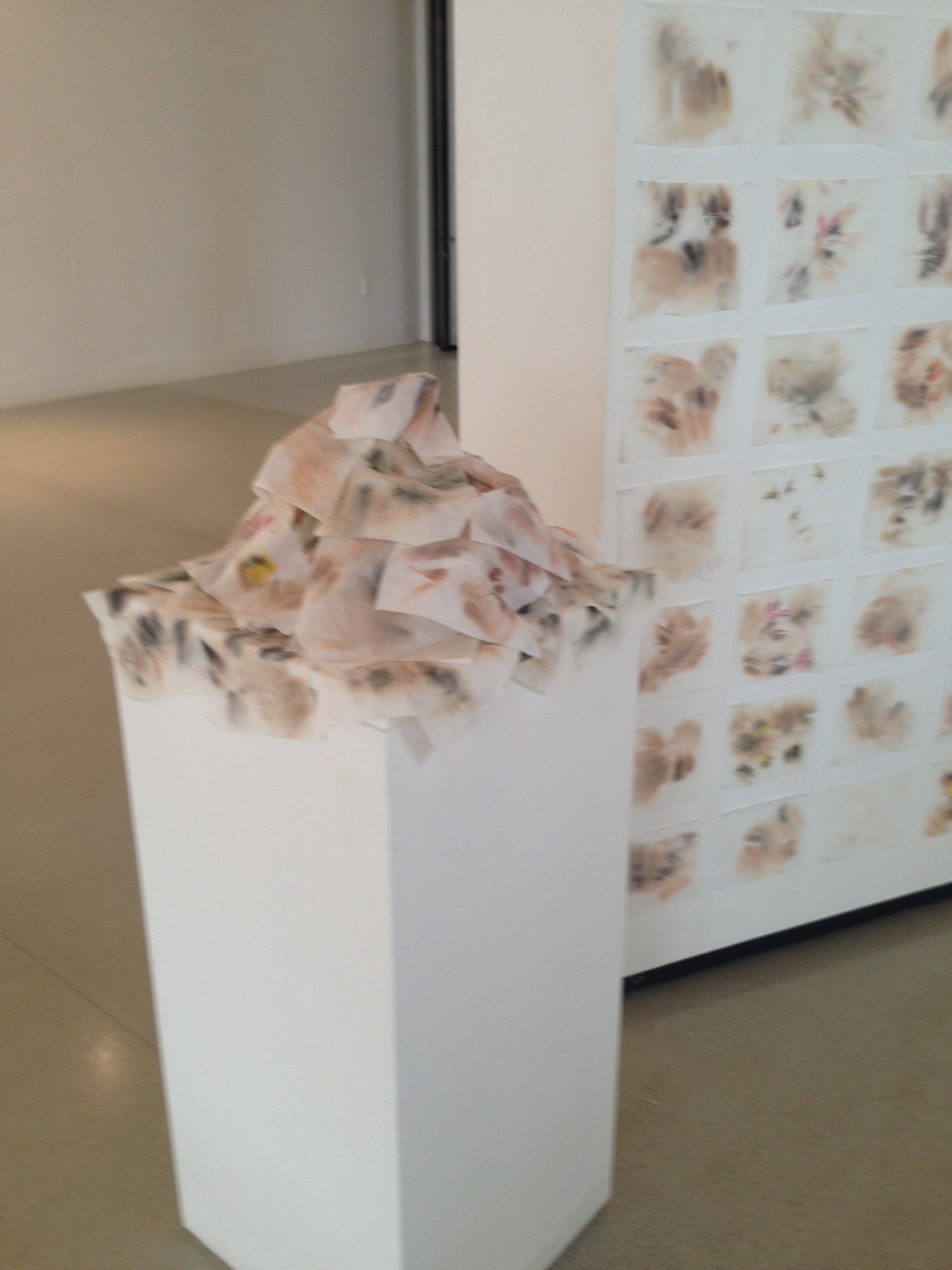
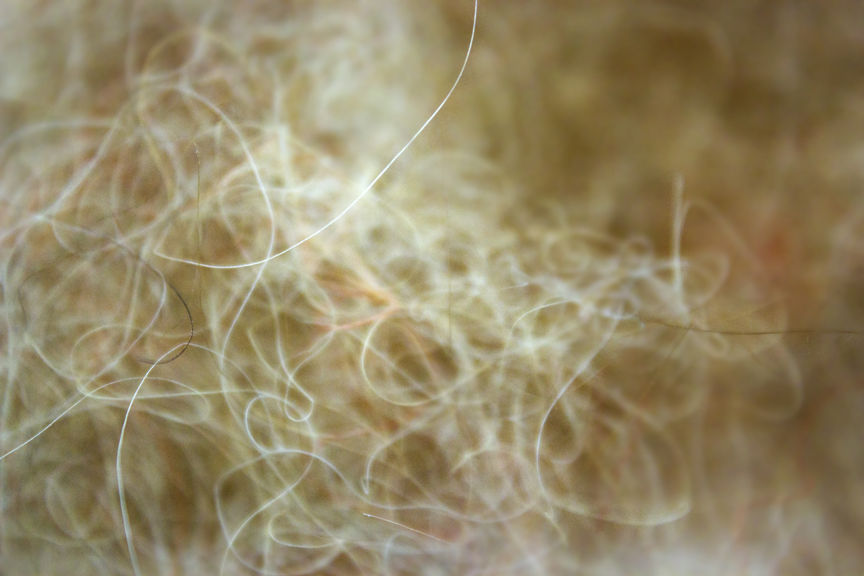


Debris – noun. Scattered fragments, usually of something wrecked or destroyed. This body of work explores the “debris” associated with the gendered performance of the beauty ritual. By combining large scale, abstract photos with the physical objects they represent; this work seeks to examine and critique the dichotomy of natural and altered bodies and the balance of desire and repulsion.
Large-scale images of make-up removal wipes, foundation sponges, bikini wax strips, and clumps of hair explore each of these discarded items in an abstract closeness. These extremely close up photographs investigate these subjects at an intimate level. This work uses the visual language of abstract body landscapes to unpack and critique the way those images are often achieved. In framing these bits of bodily trash with a critical lens, the images transform the debris from abject objects to forms worthy of objectification.
In conjunction with the close up photography, each of the actual, physical objects are displayed in the gallery as well. While the images have an organic sensuality, the objects are displayed in a cold, scientific, and clinical way. The juxtaposition of these two display choices reinforces the dichotomous way women’s bodies are expected to simultaneously be naturally attractive yet clearly altered to meet the stringent beauty standards set forth by our culture.
The make up removal wipes are installed in a grid, which dominates the gallery wall, calling attention to the tedious and repetitive way in which women alter their appearance. Each wipe is meticulously fixed to the wall referencing the detached way we dissect and inspect insects and small animals. The wax strips and pubic hair are cast in resin bricks. A collection of 1 year's worth of hair shed from brushing, combing, and showering, is shown ratted and tangled together. This sculpture functions in the same fashion, presenting the body’s debris in a manor that begs for clinical distance and curious examination.
These bits of trash reference the body of the artist, without actually displaying it, which permits deeper exploration and contemplation on the ways many women elect to alter and debase their bodies for the sake of beauty. This exhibition serves as an opportunity to have a larger conversation about the role of internalized and externalized misogyny, and how these forces are visited up women in ways that often go unnoticed. Debris places the trash associated with the beauty ritual under the microscope, allowing viewers to look on in morbid curiosity, recoil in disgust, and question their own culpability in the cultural perception of women’s bodies as both abject and object.
